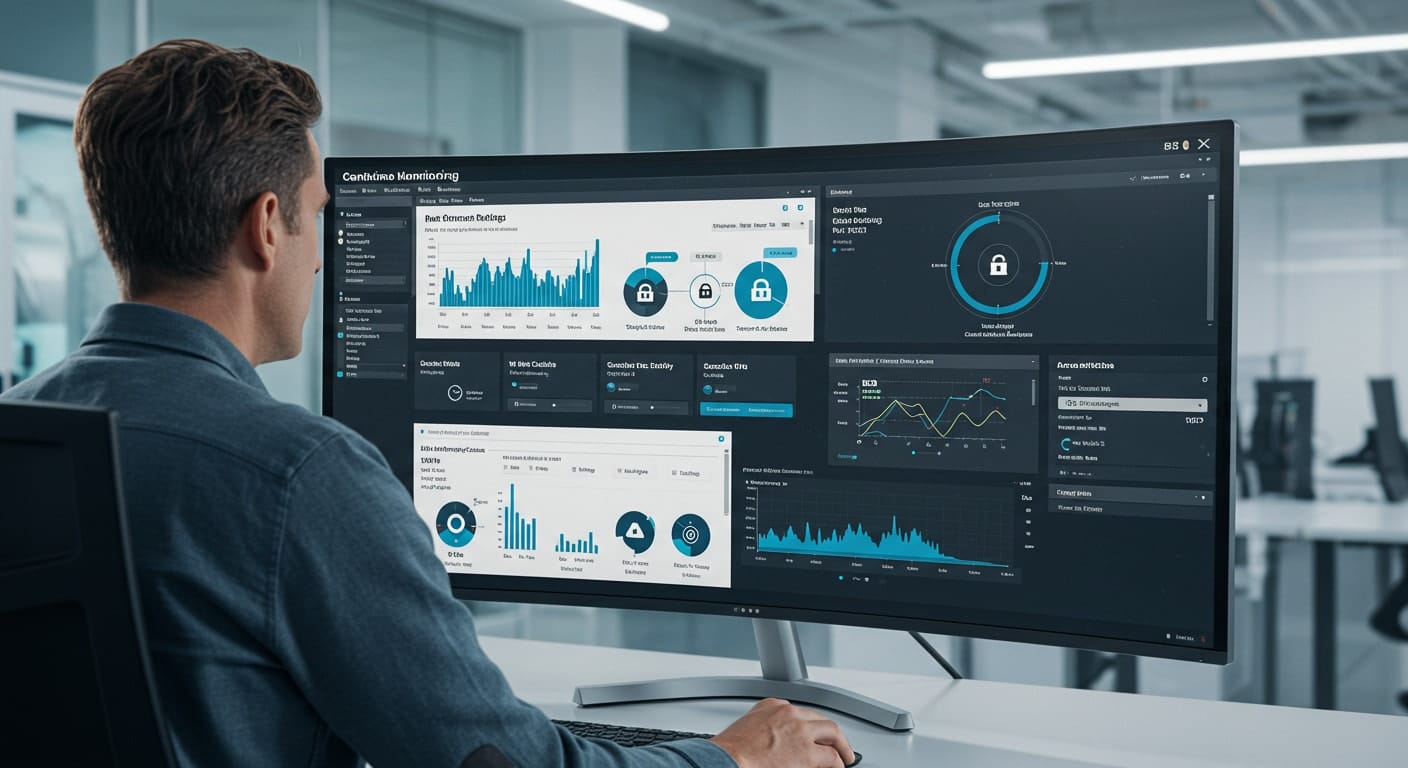The virtual desktop infrastructure (VDI) market has shifted from a niche IT strategy to a mainstream business enabler. With global demand for secure, scalable, and efficient digital workspaces, organizations across industries are investing in solutions that deliver consistent virtual desktop environments to users anywhere.
Two names stand out in this space — Citrix Virtual Apps and Desktops and VMware Horizon. Both have built strong reputations for enabling desktop virtualization, virtual apps, and virtual desktop infrastructure VDI at scale. Over the years, these platforms have evolved to meet changing demands, from traditional VDI platforms to cloud services supporting Microsoft Azure, Google Cloud, and hybrid deployments.
Remote work is no longer a temporary measure, hybrid environments are becoming standard, and IT leaders are rethinking their VDI solutions to balance performance, cost, and security.
Choosing between Citrix and VMware isn’t simply a matter of preference — it’s a strategic decision that can shape productivity, user experience, and operational agility for years to come.
In the sections ahead, we’ll explore what each platform offers, how they compare, and where each excels, so you can decide which fits your organization’s needs.
What Is Citrix VDI?

Citrix Virtual Apps and Desktops is Citrix’s flagship virtual desktop infrastructure (VDI) solution, designed to deliver secure access to virtual apps and virtual desktops from nearly any device. In addition to its traditional VDI offering, Citrix DaaS (Desktop as a Service) brings cloud-based flexibility to the same core capabilities.
Citrix is known for its HDX technology, which optimizes performance even in challenging network conditions. HDX adapts to bandwidth, latency, and device constraints, ensuring a high-quality user experience — from simple productivity tools to graphics-intensive workloads.
Deployment options include:
- On premises using Citrix Hypervisor or Microsoft Hyper-V
- Citrix Cloud for fully managed services
- Hybrid environments that blend cloud and on-site resources
Main tools for VDI deployment:
- Citrix Studio – Centralized console for configuring and managing environments
- Provisioning Services – Efficiently streams operating systems to multiple devices
- Machine Creation Services – Automates the creation and management of virtual machines
Citrix supports desktop as a service models, enabling organizations to deploy and manage workloads from public clouds like Microsoft Azure or Google Cloud. Whether delivering a single app or a complete desktop, Citrix provides the flexibility to adapt to diverse infrastructure requirements.
What Is VMware Horizon?

VMware Horizon is VMware’s enterprise-grade VDI solution, built to deliver and manage virtual desktops and applications across a range of environments. It sits within the broader VMware ecosystem, integrating seamlessly with VMware ESXi for virtualization and VMware vSphere for centralized infrastructure management.
VMware Horizon can run on premises, or in the cloud through Horizon Cloud on Microsoft Azure, Google Cloud, or other public cloud platforms. This flexibility allows IT teams to align deployment models with business priorities.
Essential management tools include:
- Dynamic Environment Manager – Personalizes desktop and application settings
- View Connection Server – Manages and authenticates user connections
- Image management – Streamlines OS and application updates for large-scale deployments
VMware Horizon also supports desktop as a service, giving organizations the option to deliver virtual machines and virtual desktop environments without maintaining heavy on-premises infrastructure.
Its integration with VMware Cloud services makes it a natural choice for organizations already invested in VMware technologies, while its protocol optimizations aim to ensure a consistent user experience across devices and locations.
How Do Citrix VDI and VMware Horizon Compare in Architecture?
The architectural foundations of Citrix VDI and VMware Horizon are shaped by their respective ecosystems, and these differences have a significant impact on flexibility, scalability, and management.
Citrix VDI offers:
- Multiple hypervisor support, including Citrix Hypervisor, Microsoft Hyper-V, and VMware ESXi.
- Integration with Citrix Cloud for centralized administration, whether in fully cloud-hosted, on-premises, or hybrid environments.
- The ability to mix and match infrastructure components, making it well-suited for organizations with diverse hardware or multiple data centers.
VMware Horizon focuses on:
- Tight integration with VMware ESXi and VMware vSphere, delivering a cohesive virtual desktop infrastructure VDI management experience.
- Optimized workflows for organizations already invested in the broader VMware ecosystem, including storage and network virtualization through VMware NSX.
Hybrid and Multi-Cloud Compatibility:
Both solutions support Microsoft Azure, Google Cloud, and VMware Cloud on AWS, but VMware’s native tools make hybrid integration more seamless for existing VMware shops, while Citrix shines in multi-cloud flexibility.
Main differences:
- Infrastructure requirements: VMware Horizon generally assumes VMware infrastructure, while Citrix adapts more readily to mixed environments.
- Vendor lock-in risk: VMware’s ecosystem depth can lead to tighter dependency, whereas Citrix’s open hypervisor support can reduce lock-in.
- Ongoing management: Citrix’s flexibility adds complexity, while VMware’s streamlined stack can simplify administration — but only if your stack is VMware-first.
Which Offers the Better User Experience?

User experience is critical in VDI, as even minor delays or glitches can erode productivity.
Citrix VDI delivers:
- HDX technology for optimized graphics and multimedia performance.
- USB device optimization for peripherals like webcams, scanners, and smart cards.
- Stable performance over low-bandwidth connections.
- Seamless integration with local resources such as printers and file systems.
VMware Horizon offers:
- Protocol enhancements designed for demanding workloads.
- Integration with VMware NSX for secure, high-performance networking.
- Smooth desktop delivery for both simple and graphics-heavy applications.
Side-by-Side Comparison:
| Feature | Citrix VDI | VMware Horizon |
|---|---|---|
| Session Performance | Excellent over low bandwidth (HDX) | Strong, optimized for VMware environments |
| Device Redirection | Robust, includes advanced USB support | Solid, but less customizable |
| Multimedia Handling | Adaptive streaming for varied bandwidth | High quality, but may require more bandwidth |
| Operating Systems Supported | Windows, Linux, macOS access | Windows, Linux, macOS access |
Both deliver a seamless user experience, but Citrix edges ahead in weak network conditions, while VMware excels when paired with VMware-optimized infrastructure.
How Do Security Features Compare?

Security in VDI is about more than encryption — it’s about ensuring only authorized users can connect, protecting remote users, and maintaining compliance.
Citrix VDI includes:
- Adaptive authentication that adjusts login requirements based on risk.
- Multi-factor authentication (MFA) support.
- Granular control over access policies and user sessions.
- Role-based permissions to limit exposure to sensitive data.
VMware Horizon offers:
- Robust security features with VMware NSX providing micro-segmentation and advanced network security.
- MFA integration with major identity providers.
- Role-based access controls for both admins and end users.
Both platforms protect:
- Data in transit and at rest using encryption.
- Compliance with standards like GDPR, HIPAA, and ISO frameworks.
- Remote connections through hardened gateways and adaptive authentication.
Citrix excels in fine-grained user control and adaptive security policies, while VMware stands out for network-level protections via NSX, making it ideal for environments with strict segmentation requirements.
Which Is Easier to Deploy and Manage?
Ease of deployment and management can significantly influence the total cost of ownership for any VDI solution. Both Citrix and VMware Horizon have strengths here, but the experience differs depending on your environment and technical expertise.
Citrix VDI:
- Machine Creation Services (MCS) automates provisioning and lifecycle management for virtual desktops, reducing setup time.
- Citrix Studio provides centralized control, allowing administrators to configure, monitor, and maintain resources from a single console.
- Offers flexibility across cloud services such as Microsoft Azure and Google Cloud, as well as on premises deployments, making it adaptable for hybrid strategies.
VMware Horizon:
- View Connection Server streamlines provisioning by handling authentication, connection brokering, and session management.
- Tight integration with VMware Cloud and Horizon Cloud simplifies deployment for VMware-centric infrastructures.
- Native alignment with VMware ESXi and vSphere can reduce complexity if you’re already running these platforms.
Complexity Considerations:
- Large-scale VDI technology environments in either platform may require advanced configuration for fine-tuning, load balancing, or integrating specialized applications.
- Ongoing management often includes patching, image updates, and policy adjustments, which Citrix can make more complex due to its multi-cloud flexibility, while VMware keeps it simpler — but more tied to VMware-specific tools.
How Do They Perform in Hybrid and Multi-Cloud Environments?

Hybrid and multi-cloud capabilities are increasingly important for organizations seeking agility, redundancy, and workload optimization.
Citrix VDI:
- Runs across Microsoft Azure, Google Cloud, Citrix Cloud, and on premises infrastructures.
- Broad compatibility allows organizations to spread workloads across multiple providers, reducing the risk of dependency on a single cloud vendor.
- Built-in tools support cloud platforms workload balancing and easy scaling for fluctuating demands.
VMware Horizon:
- Strongest integration is with VMware Cloud on AWS, enabling seamless migration of on-premises VMware workloads to the cloud.
- Also supports Azure and Google Cloud, though these deployments may require additional configuration compared to AWS.
- Built-in resource management tools allow for dynamic allocation between environments, ensuring optimal performance.
In practice, Citrix excels in multi-cloud flexibility, while VMware Horizon offers the smoothest hybrid experience for existing VMware environments.
Which Has the Edge in Cost Efficiency?
Cost efficiency in VDI solutions depends heavily on your deployment model, infrastructure choices, and usage patterns.
Citrix Cloud and VMware Horizon Cloud both operate on subscription-based pricing. However, the total cost of ownership goes beyond subscription fees — it includes infrastructure requirements, licensing costs, support for users, and cloud consumption rates.
Citrix VDI can be more cost-effective when:
- You need to mix on premises and multiple cloud platforms without major infrastructure changes.
- You benefit from Citrix’s adaptive delivery, which can reduce bandwidth costs for remote users.
- You want flexibility to switch between hypervisors without penalty.
VMware VDI often delivers better ROI when:
- Your organization is already invested in VMware ESXi, vSphere, or VMware Cloud on AWS.
- You can take advantage of bundled VMware licensing agreements.
- Your workloads are stable and predictable, allowing for optimized resource allocation.
Ultimately, Citrix’s multi-cloud adaptability can reduce long-term migration costs, while VMware’s deep ecosystem integration often lowers operational expenses for VMware-centric IT departments.
Features Comparison Table
| Feature Category | Citrix VDI | VMware Horizon |
|---|---|---|
| Virtual Apps & Desktops Delivery | Robust app and full desktop delivery with HDX technology | Strong delivery, optimized for VMware infrastructure |
| Image Management | Machine Creation Services and Provisioning Services for flexibility | Streamlined tools integrated with vSphere for consistency |
| Security Features | Adaptive authentication, MFA, granular access controls | Robust security, MFA, and VMware NSX micro-segmentation |
| Cloud Services Support | Microsoft Azure, Google Cloud, Citrix Cloud, on premises | VMware Cloud on AWS, Azure, Google Cloud |
| Operating Systems | Windows, Linux, macOS access | Windows, Linux, macOS access |
| Management Tools | Citrix Studio, detailed policy configuration | View Connection Server, Dynamic Environment Manager for personalization |
Both platforms are competitive, but Citrix leads in multi-cloud delivery flexibility, while VMware is stronger in tightly integrated VMware environments.
Can You Switch Between Citrix and VMware?
Switching between Citrix VDI and VMware Horizon is possible, but it’s not always straightforward. Both are traditional VDI platforms with distinct architectures, management tools, and integration points, which means migration requires careful planning.
Data and image management portability is one of the main challenges. While both platforms support standardized virtual machine formats and image management workflows, custom configurations, profiles, and policies often need rework during migration. For example, Citrix environments using Machine Creation Services or Provisioning Services may require conversion to VMware-compatible templates.
To minimize vendor lock-in, some organizations adopt desktop as a service (DaaS) solutions or hybrid strategies. By hosting workloads on neutral cloud platforms such as Microsoft Azure or Google Cloud, IT teams can maintain flexibility and avoid being tied exclusively to one vendor’s ecosystem.
Hybrid cloud strategies can also allow gradual migration — running Citrix in one environment while testing VMware Horizon in another. This approach reduces risk, spreads costs, and gives users time to adapt to any changes in workflows or performance.
If portability and adaptability are high priorities, ensuring that your VDI design uses cross-platform standards from the outset will make future transitions much smoother.
A Simpler Alternative: Apporto

While Citrix VDI and VMware Horizon each have their merits, both bring a level of complexity in infrastructure, licensing, and ongoing management. Apporto offers a different approach — a browser-based VDI solution that delivers secure, high-performance desktops without the heavy infrastructure overhead.
With Apporto, you can:
- Launch desktops directly in the browser — no client installation or VPN required
- Deploy in as little as 48 hours
- Use multi-factor authentication and encryption for built-in Zero Trust security
- Scale easily across Windows, Mac, and Linux devices
- Predict costs with transparent, usage-based pricing
For organizations looking to modernize quickly, Apporto simplifies virtual desktop delivery while maintaining enterprise-grade security and performance. Try Apporto now to see how simple VDI can be.
Final Thoughts: Choosing Between Citrix VDI and VMware Horizon
Both Citrix and VMware remain leading VDI solutions, with Citrix excelling in multi-cloud flexibility and high-quality delivery under challenging network conditions, and VMware standing out for deep VMware ecosystem integration and streamlined hybrid deployment.
Your choice should align with your operating systems requirements, security features priorities, and hybrid environment strategy. If you already run VMware ESXi or vSphere, Horizon might be the natural fit. If you need maximum deployment flexibility across diverse clouds, Citrix may be the better choice.
However, if you want to avoid infrastructure requirements, licensing complexity, and lengthy deployment timelines, Apporto delivers a compelling alternative. It’s a secure, browser-based platform designed for speed, simplicity, and predictable costs — without sacrificing performance.
In the evolving VDI market, the best solution is the one that meets your current needs while staying adaptable for the future.
Frequently Asked Questions (FAQs)
1. What is the main difference between Citrix VDI and VMware Horizon?
Citrix VDI is known for multi-cloud flexibility, HDX technology, and broad hypervisor support, while VMware Horizon offers deep VMware ecosystem integration and streamlined hybrid deployment for VMware-centric infrastructures.
2. Is VMware Horizon cheaper than Citrix VDI?
Costs vary. VMware Horizon can be more affordable for organizations already using VMware ESXi or vSphere. Citrix often proves cost-effective for multi-cloud, mixed-hypervisor environments requiring broad deployment flexibility.
3. Which offers better security features for remote users?
Both deliver strong security. Citrix offers adaptive authentication and granular access controls, while VMware Horizon integrates VMware NSX for advanced network segmentation and protection, particularly in complex enterprise deployments.
4. Can Citrix and VMware run in the same virtual desktop environment?
Yes, but typically in parallel rather than fully integrated. Some organizations run Citrix for specific workloads and VMware Horizon for others, often leveraging shared cloud infrastructure for flexibility.
5. Which is better for hybrid cloud deployments?
Citrix excels at multi-cloud flexibility across Azure, Google Cloud, and on-premises setups. VMware Horizon is strongest in VMware Cloud on AWS, offering seamless migration from existing VMware environments.


